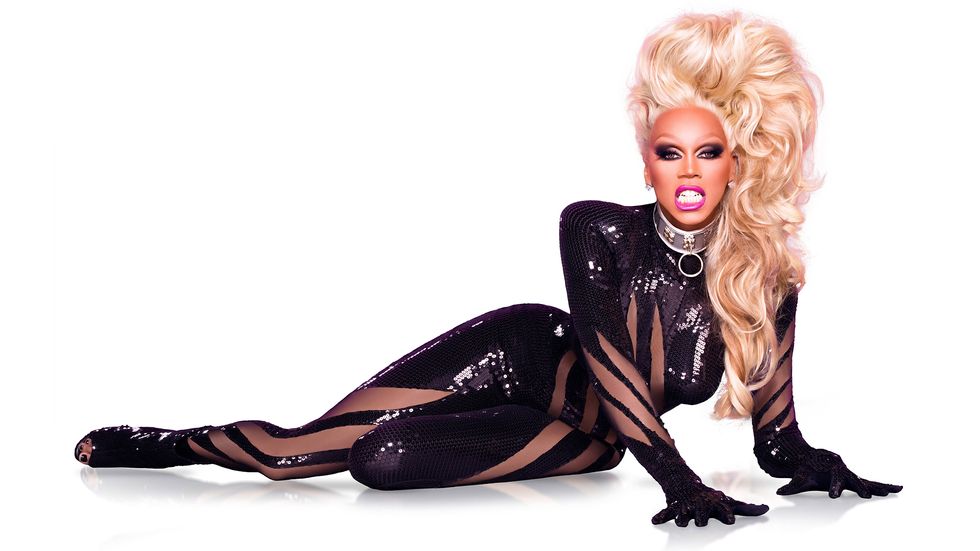“We’re all born naked and the rest is drag,” stands as one of RuPaul’s most notorious quotes, as he is the leading figure of the American drag scene; if not the international one as well. The quote looks pretty convincing to the queer community at a first glance; for it promotes a notion of freedom and self-autonomy of bodies and problematizes the socially-constructed gender binary. Nevertheless, the context in which the quote came to be proves that the good intentions behind drag and drag performance have been shoved under the rug of our patriarchal and sexist society. While it sounds favorable that cis-men, generally speaking, have taken drag as a form of exposure and visibility to the queer community, through the deliberate cross-dressing and cross-performing; they have also become subscribers to the gender dichotomy of masculinity vs. femininity in many ways.
As we continue to live in a patriarchal society; that mean of “exposure and visibility”; through the performance of “extravaganza,” has become shaped by the embodiment of femininity and its items. Not only does that fact make drag seem appropriating of the legitimate experiences of women through the stage performance aspect of it, but it also reinforces, to an extent, the gender-binary that is shaped by the socially constructed dichotomy of masculinity and femininity and their items.
Drag and drag performance audience varies from a context to another. On one hand, Viva, a 2015 production that narrates the story of the aspiration of a young hairdresser of becoming a nightclub drag performer in Cuba, manifests the high multitude of straight-seeming, cis-gendered, homophobic men who attended the shows and provoked numerous acts of violence. Within this context, drag and drag performance becomes dominated and handled by those men; as Viva portrays the controlling element that men seem to possess in regard to the persistency of the local shows, mainly for they become the mean in which drag performers earn their living.
On the other hand, Miz Cracker, a New York based drag queen and a writer for the Web-Based daily magazine Slate, reported that young women have become “the biggest consumers of drag culture.” While the sentiments of those women vary; many have perceived drag to be a powerful tool that “[has] the capacity to broaden horizons and change minds;” as one of the young women that Miz interviewed noted. In light of this context; drag is set on the right track of being a mean of “rebellion and nonconformity”; even when those young women weren’t necessarily the target audience for drag performers; as Miz noted in her article.
While some aspects of drag are indeed aspiring; such as the abundance of talents that those proclaimed drag queens possess, there is an aspect in particular that I have personally gotten to resent. As drag continues to be defined by the adaptation of socially-long-known female items; I have observed many drag performances to adopt “bitchiness and vulgarness” as an attribute of representation. As it is entertaining for many of us, including myself, to watch the unfolding drama of Ru Paul’s Drag Race; I have encountered many to withhold the implication that drag is adopting this “sassy” and “dramatic” attributes directly from women; which ultimately perpetuates those misconceptions regarding women.
We are indeed “born naked and the rest is drag,” for gender is a performance that isn’t inherent to us, yet rather imposed upon us by society. Many cis-men have the ability to convey a socially-constructed woman image, and many women can also convey a socially-constructed male image. Yet many fail to recognize the implications and complexities of the drag performance. We have gone a long road indeed into proving gender a social construction and it’s about time that the goal behind drag/cross-dressing/drag-performance should become equality. Drag can indeed be a mean of exposure to the unnecessary difficulties and hardships that woman-labeled-bodies have to endure in our traditional and normative society. Drag can be the mean to highlight the hours that drag performers spend to put on, ultimately, the best woman picture in whatever shape or form that is. Drag can also highlight the mental challenges that women regularly experience as a result of the image that our patriarchal society has unfoundedly required from them.
Our bodies, which were borne into the world literally naked, have indeed become bodies of labels. We have indeed become copies of products advertised through our socially-constructed presentations. Women, as well as men, including transgender, intersex, and queer bodies as well, have become ultimately shaped by those socially-constructed identity labels. In regard to drag and drag performance in particular, the practice should begin to aspire to expose the peculiar inequalities that many women have to unjustifiably endure for the sake of the male gaze.





 man making a coffee lattePhoto by
man making a coffee lattePhoto by  Photo by
Photo by  Photo by
Photo by  Photo by
Photo by 









 Photo by
Photo by 








